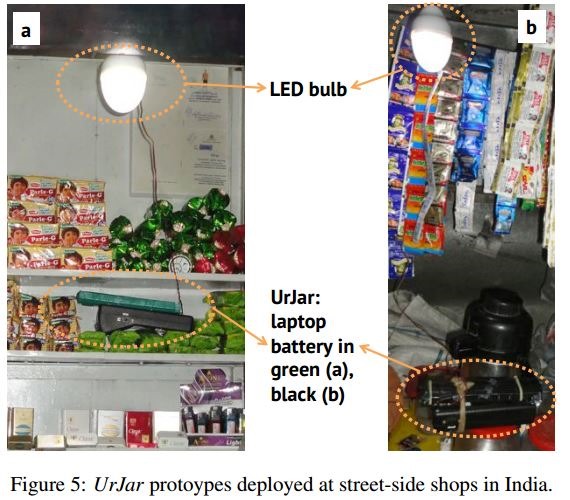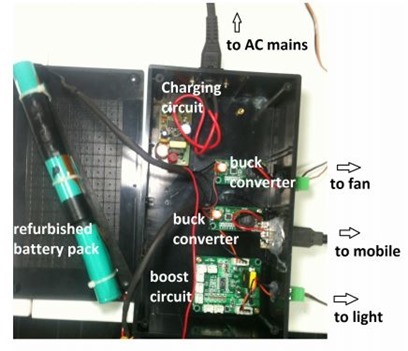Old Laptop Batteries Can Light Homes For 1640 Hrs A Year: Researchers
IBM Researchers in India have come up with an exciting solution which can kill two birds with one arrow: UrJar, which is a “A Lighting Solution using Discarded Laptop Batteries.” As per the researchers, 70% of all discarded laptop batteries have enough energy to light up a LED for 1640 hours every year, which translates into 4 hours of electricity, per day for one year.
The research was presented at an event in San Jose, USA.
On one hand, this invention can help recycle tremendous amount of electronic waste (E-waste) generated every year, and on the other hand, it can help spread light in poor slums in developing countries, where the cost of electricity is too much.
Massive Problem of E-waste
As per Wikipedia, E-Waste is a term which includes “discarded computers, office electronic equipment, entertainment device electronics, mobile phones, television sets, and refrigerators”, which are destroyed after it’s life ends. US alone produces 50 million of e-waste every year, which includes 30 million computers and laptops.
Meanwhile Europe discards 100 million mobile phones every year. China produced 2.3 million tons of e-waste in 2010. Countries like India, where the mobile and Internet revolution is currently underway, will produce tons of E-waste in coming days, and there has been no planning done to counter that.
As per various estimates, 50 million tons of lithium-ion laptop batteries are discarded every year.
E-waste not only contains hazardous materials which are capable of inflicting much damage to our nature, but it also contains several precious elements such as gold, silver and energy which can be recycled for further usage.
UrJar, an invention by IBM India researchers has certainly created a viable solution for e-waste such as laptop batteries which can be used for lighting up developing countries without any fresh investments.
Infact, there are solutions for lighting up LED bulbs using recycled batteries and solar panels, but using a discarded battery will make the solution almost free.

Vikas Chandan, a research scientist who led this project at IBM’s Smarter Energy Group, said, “The most costly component in these systems is often the battery.. In this case, the most expensive part of your storage solution is coming from trash.”
How Does It Work?
IBM Researchers analyzed the discarded laptop batteries, and took out individual storage units called ‘cells’, tested the ones which worked perfectly fine, and repackaged them into a new refurbished battery packs. They added charging dongles into them, and gave the equipment to few users from Bangalore, who live in slums.

The results are astonishing to say the least. The users were able to power up their LEDs, efficiently. As per researchers, the only request which came from the users was ‘rat-resistant wires and brighter bulbs’.
IBM Researchers teamed up with a research agency called RadioStudio for this invention. IBM has declared that the units would be provided free of charge to poor countries.
Here is the paper which details about UrJar: it’s mechanism and the case study details on Bangalore users.
Just for starters, 400 million people in India are still without any access of electricity, and imagine what can happen once all 50 million discarded laptop batteries are used for generating electricity?
A miracle would be an understatement.

[…] IBM Researchers in India have come up with an exciting solution which can kill two birds with one arrow: UrJar, which is a “A Lighting Solution using Discarded Laptop Batteries.” […]